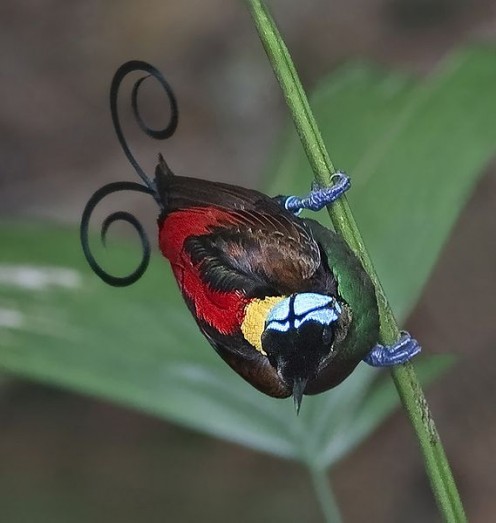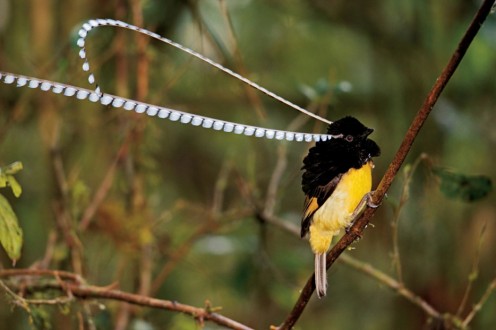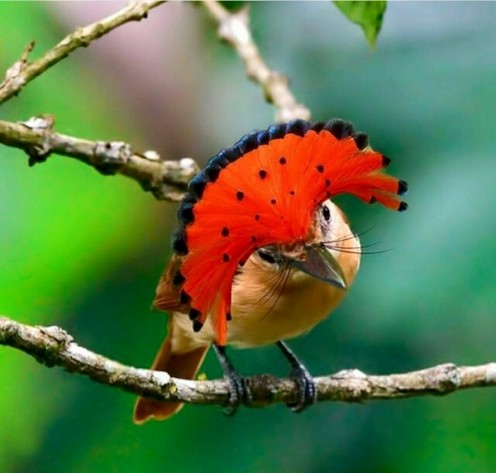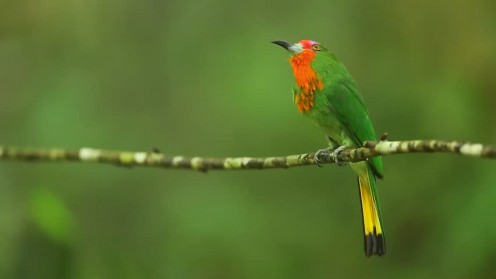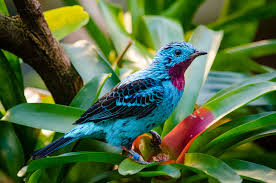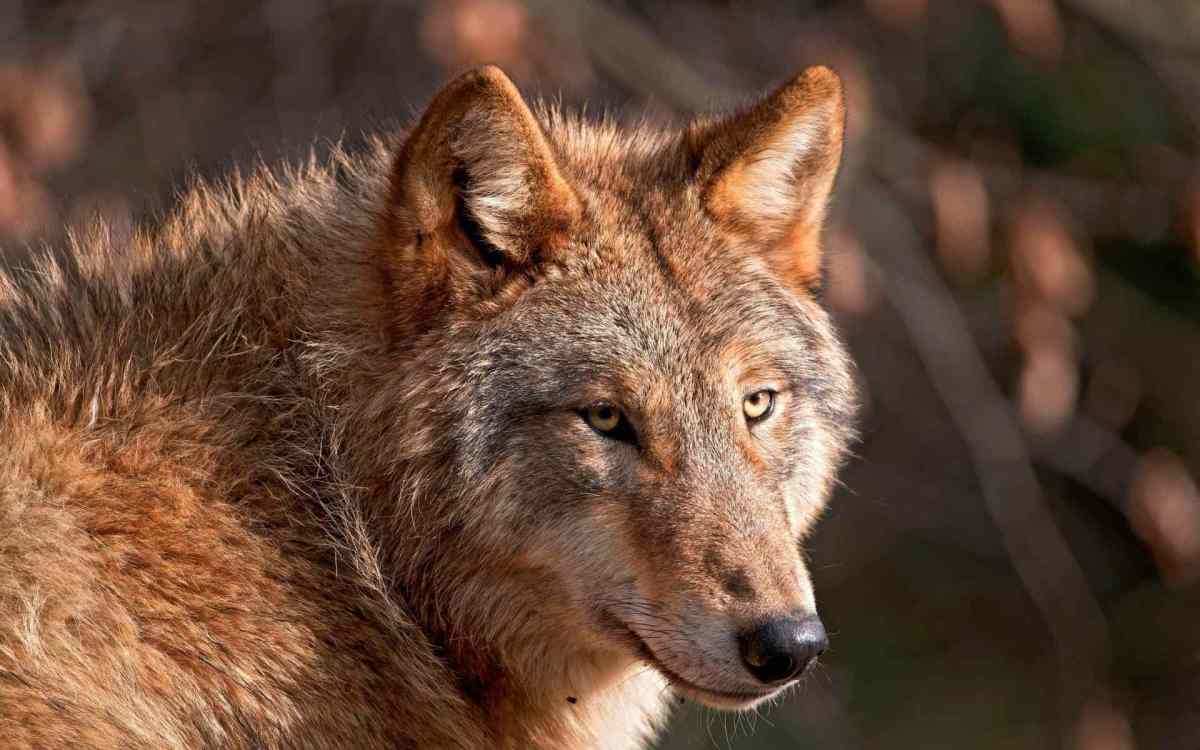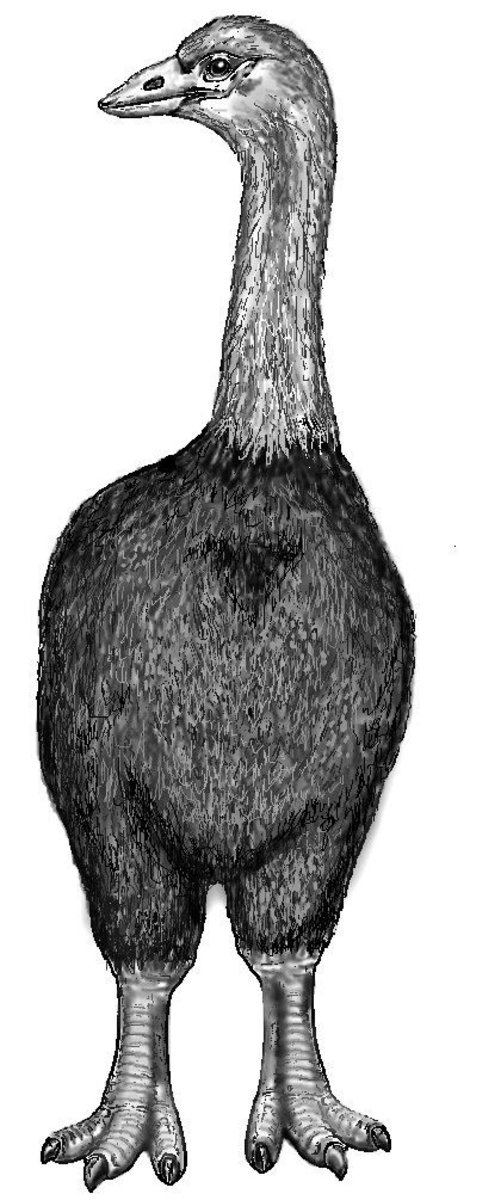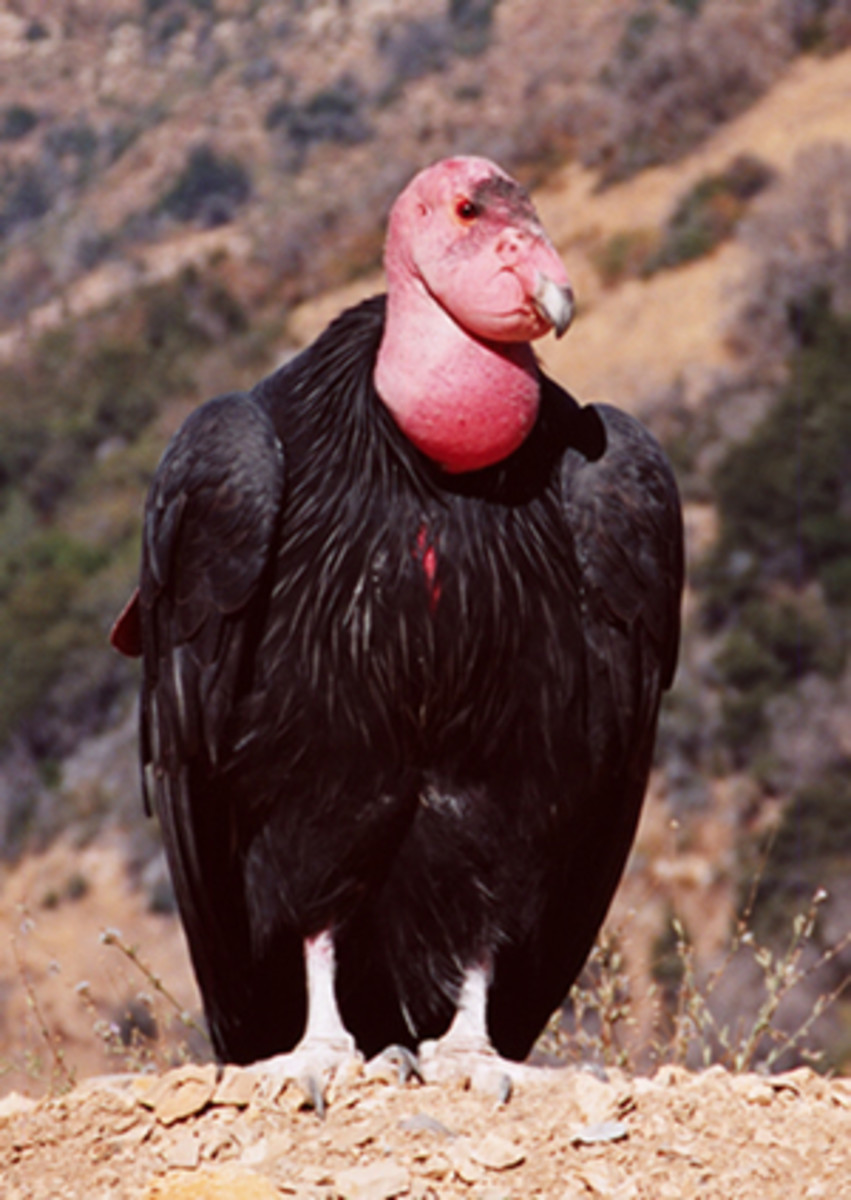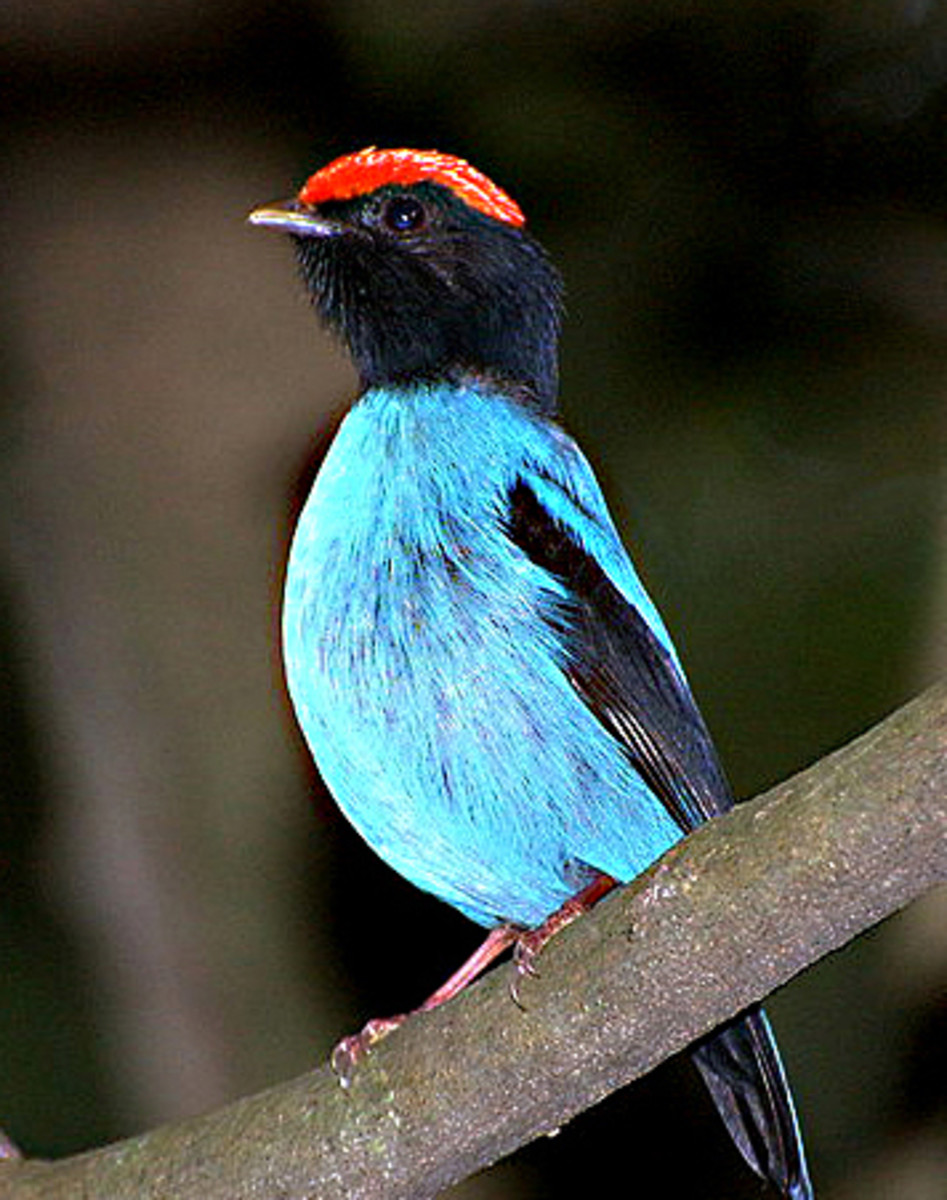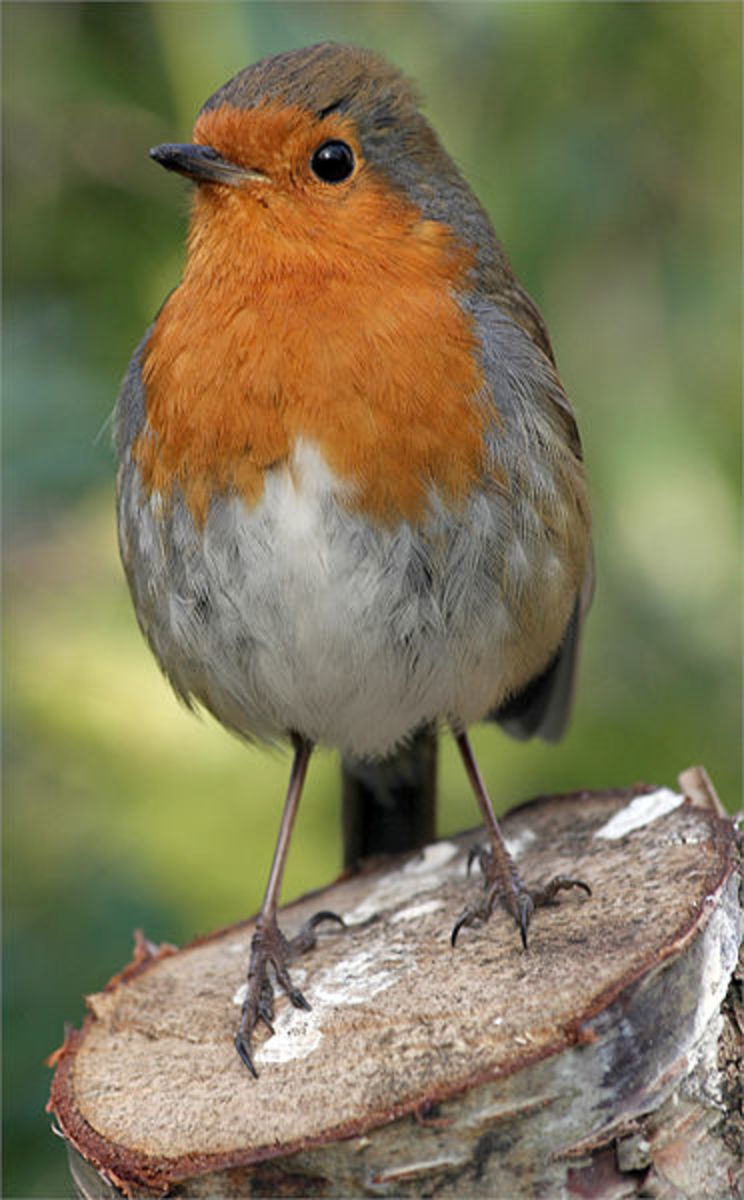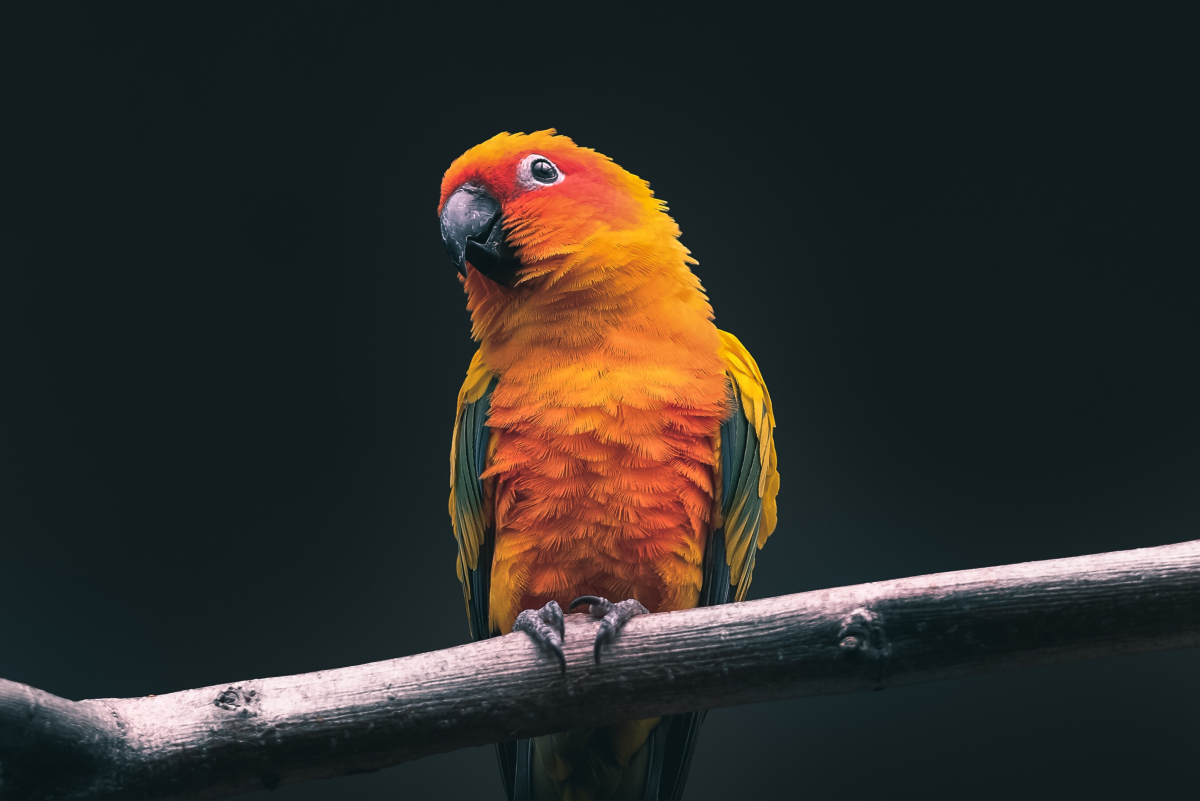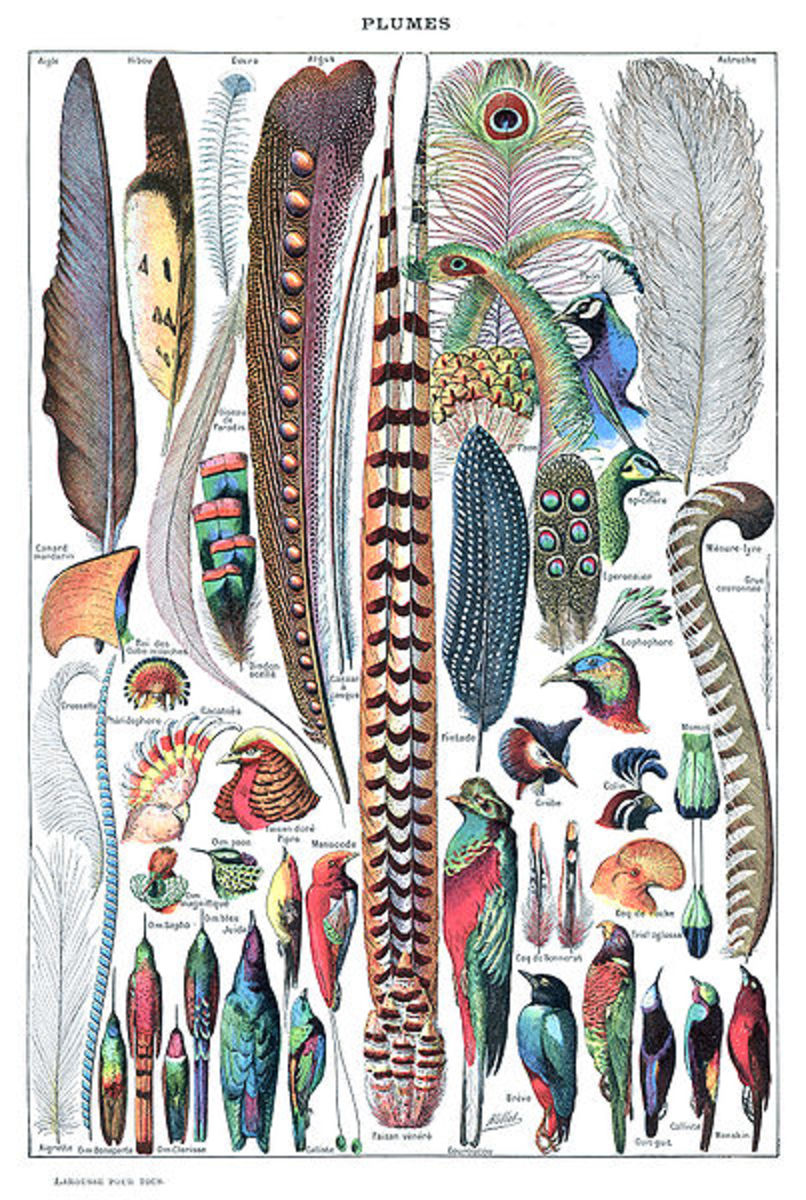A World Of Amazing Unique Exotic Birds, Some Endangered
Giant Ibis (Thaumatibis gigantea) Cambodia's national bird

Explained Terms, Meanings, And Abbreviations Used In Article
Terms
| Meanings
| Abbreviations
|
|---|---|---|
International Union for Conservation of Nature
| Conservation of Nature and Natural Resources
| IUCN
|
Extinct
| None
| EX
|
Extinct In The Wild
| Only lives in captivity
| EW
|
Critically Endangered
| Extremely high risk of extinction in the wild
| CR
|
Endangered
| Very high risk of extinction in the wild
| EN
|
Vulnerable
| High risk of extinction in the wild
| VU
|
Near Threatened
| Close to qualifying for a threatened category in near future
| NT
|
Many factors come into play that affects the bird species survival chance. Safety measures are needed to help recover the declining bird species and needs to be reinforced to protect the species.
The Evidence For The Birds Possible Extinction
BirdLife states the following criteria for possible bird extinction:
"Such evidence for extinction may include a combination of the following factors:
- There have been no confirmed records for a long time (it is difficult to be more prescriptive: the duration will depend on the intensity of fieldwork and the ease of detection)
- For species with recent last records, the decline has been well documented
- There are severe threatening processes operating (e.g. extensive habitat loss, introduction of alien predators, intensive hunting)
- The species has attributes known to predispose it to extinction, e.g. it was probably naturally rare and/or had a tiny range (as evidenced by the paucity of specimens relative to collecting effort), or flightless etc. In some cases, all species or congeners may have gone extinct through similar threatening processes.
- Surveys would have detected it (good/recent surveys have been adequate; species is unlikely to be overlooked).
Evidence that the species may remain extant may include a combination of the following factors:
- The lack of records is best explained by inadequate fieldwork (any surveys have been insufficiently intensive/extensive, or inappropriately timed; or the species' range is inaccessible, remote, unsafe or inadequately known)
- The lack of records is best explained by the fact that the species is difficult to detect (low density, cryptic, inconspicuous, nocturnal, nomadic, silent or call unknown, identification difficult)
- There have been reasonably convincing local reports or unconfirmed sightings
- Suitable habitat (free of introduced predators and pathogens if relevant) remains within the species' known range. In some cases, all species or congeners may survive despite similar threatening processes."
Avibase is the world's database on the species of birds with over 19 million records pertaining to birds. There are about 10,000 species of birds with 22,000 subspecies. The site also hosts a bird checklist of the world for bird watchers.
"What is a fish without a river? What is a bird without a tree to nest in? What is an Endangered Species Act without any enforcement mechanism to ensure their habitat is protected? It is nothing."
— Jay InsleeReasons Why Birds Are Dying Out
Many factors come into play when you consider the evidence and how it relates to the birds of many different species. What effects one bird species may not affect another bird species the same way.
- The loss of forest habitat whether it's from natural disasters or humans taking over their habitat which has become a major threat.
- Fisher's bycatch is placing seabirds in a lot of danger.
- The spreading of invasive alien species.
- One concern is the damage that pollution causes.
- Biodiversity threats causing many issues.
- The climate change causing some problems.
- Agricultural practices are the greatest threat.
World's Largest Bird The Ostrich
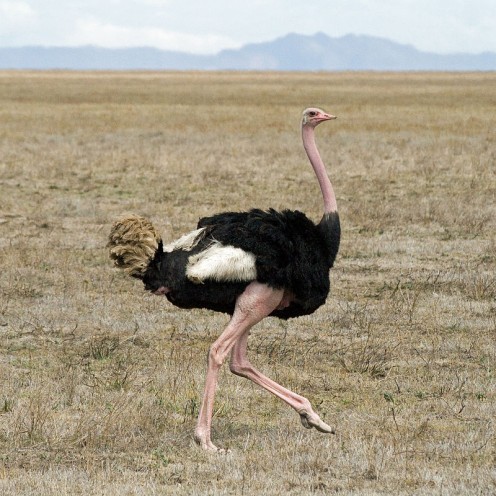
Ostrich World's Largest Living Bird
The Ostrich is declining in numbers but it isn't a concern yet but mostly seems to be from loss of habitat. Those long skinny legs do support the body weight since they are centered perfectly to their body portion. The Ostrich doesn't fly since the feathers hang loosely from their body but they can run up to speeds of up to 40 mph. The difference in color of a male and female is that male Orstrich's has a rich color of black and white to attract the female which the female is light brown in color to attract the male. Some amazing facts are:
- "To get a female's attention, males bow and flap their wings outward to display their plumage. When they are ready to mate, the male's beak and shins will turn bright red. Sometimes, his neck will change to a red color to match. Females also change color when they are ready to mate. Their feathers will turn a silvery color, according to the American Ostrich Association." A lone male will come and go during the mating season.
- They live in groups called flocks and can have up to a 100 with a dominant male, and female with few more females as assistance. The dump nest (communal nest) holds up to 60 eggs. Eggs are six inches in diameter and weigh up to three pounds.
- Both male and female sit on the eggs for 42 to 46 days and both sexes take care of the babies. The babies are as big as chickens when they hatch.
- The male is called a rooster or cock and the female is called a hen.
- Don't need water but will drink if they come across water, their water comes from the plants they eat.
- Their eyes are two inches in diameter, grow up to nine feet tall, weigh up to 320 lbs., and only have two toes on each foot while other birds have three to four toes on each foot.
- In captivity, the Ostrich lives all over the world. Their natural habitat is dry hot savanna's the woodlands of Africa. They can live between 50 to 75 years.
- The Ostrich lays with its head against the sand to blend in. They can only kick forward since their legs can't bend backward but they can kill a lion with a kick.
- Their food consists of roots, seeds, leaves, snakes, lizards, locusts and rodents. Sand and pebbles is used to help grind their food up.
Birds singing and dancing to dubstep compilation by funcompilations
New Caledonian Owlet-nightjar (Aegotheles savesi)
Very little is known about this bird the New Caledonian Owlet-nightjar. On the ICUN Red List, it is cited as CR since it is believed that there may be 1 - 50 left because of the rare sightings. The last time the bird was sighted was in 1998 so more research is needed but because of the remote location makes it difficult. Island of New Caledonia, is where this bird lives, the South Pacific, east of Australia. Other owlet-nightjars are smaller in size with shorter legs. The New Caledonian Owlet-nightjar plumage is black and marked with dense, wavy, grey-brown lines and believed to be a ground-dwelling habitat. The first sighting was in 1880 when it flew into a house the bedroom then it wasn't seen again until 1998. The voice of the New Caledonian Owlet-nightjar has never been heard.
New Caledonian Owlet-nightjar (Aegotheles savesi)
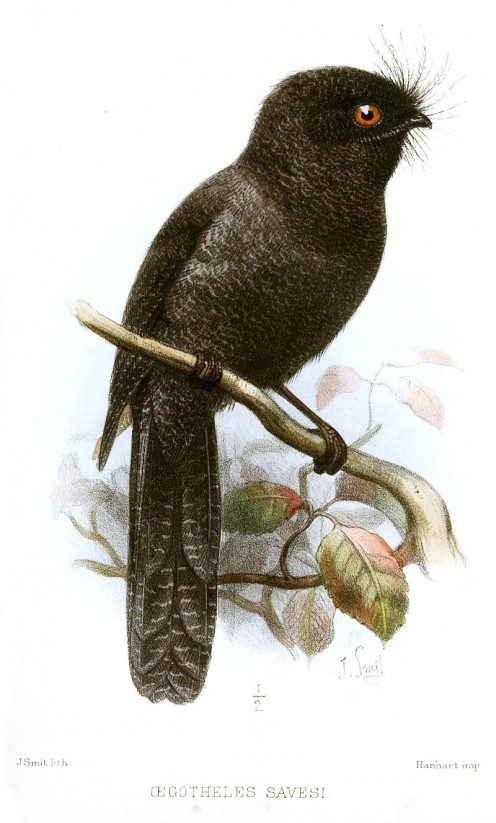
A List Of Birds That Make Great Pets
- Jenday Conure - This is very smart bird that loves to be social and interact with people. Can learn to talk but it takes a lot of time. This type of bird can be loud at times
- Red Factor Canary - To keep it color you will need to feed the bird food that is colored-feed but keep away from the light colored carpet. This bird loves fresh fruit and vegetables that are grated which can be time-consuming. Doesn't care for being handled but does sing.
- Miligold Macaw - This type of bird species needs lots of room. If this bird doesn't get the attention it wants every day (couple hours a day) it is possible it will become loud and be destructive. Needs to be provided with a lot of toys and treats.
- Umbrella Cockatoo - A very smart bird that learns to talk quickly and can do tricks. This bird likes to scream a lot but is very cuddly, affectionate and tame but can become aggressive toward one member of the family. Just for fun, they enjoy tearing up the furniture.
- Victoria Crowned Pigeons - A very pretty bird that is a ground dweller that doesn't live in a cage so you will need a large room for the bird to run around in. Easy to tame the Victoria Crowned Pigeons.
- Black Palm Cockatoos - The most beautiful bird of the cockatoo's species. A very needy bird that you will need to spend at least two hours a day and be home at least six hours or more a day and be able to handle the very loud screaming, however; it is a very smart pet. You will need to cook for the bird and provide a large cage as they grow up to two feet. This bird is on the EN list in the wild.
Pictures Of Exotic Pet Birds
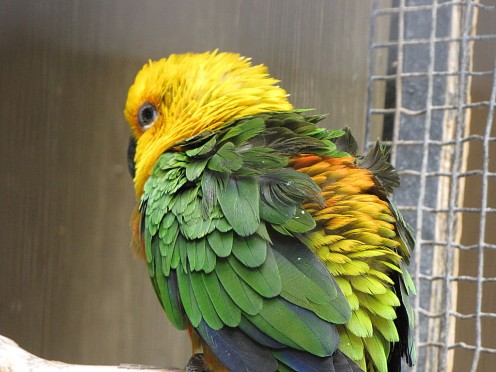
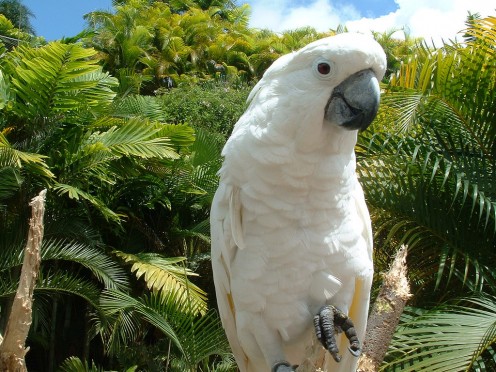
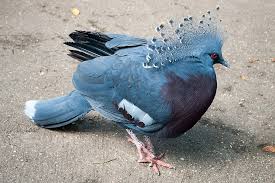
Christmas Island Frigatebird (Andrew's Frigatebird)
"The most recent population census indicates a population of 2,400-4,800 mature individuals (D. James in litt. 2003), roughly equivalent to 3,600-7,200 individuals in total. A recent genetic analysis estimated the effective population size to be approximately 5,000 individuals (Morris-Pocock et al. 2012)." This bird is listed as CR by the IUCN as the rate is declining.
Interesting facts about the Christmas Island Frigatebird also called the Andrew Frigatebird. This bird lives on the Christmas Islands in the Indian Ocean.
- It is nickname the pirate since it harasses other birds and steals their food.
- Forces other birds to regurgitate their food. Catches fish in midair by dive bombing.
- The Christmas Island Frigatebird is the rarest of the five species.
- Doesn't walk or swim and nests in tall trees to protect against the weather elements.
- An aerial bird.
- Generally found in pairs. The female produces one chick every two years.
Christmas Islands Frigatebird
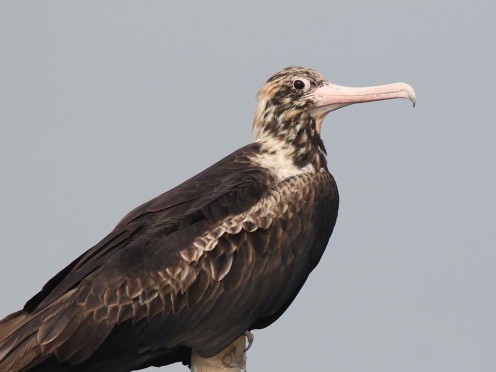
Twenty-Four Pictures Of Birds
Juan Fernández Firecrown (Sephanoides fernandensis)
Off the coast of Chile, on the Isla Robinson Crusoe, the Juan Fernandez Island is where you will the entire population of the Juan Fernandez Firecrown a slightly larger hummingbird at five inches in length. Estimated that there are about 490 - 2000 left which places them on the CE list at IUCN as the numbers are declining.
- Males are a fiery bright rufous-orange with a reddish yellow crown but the female completely different in color so for a long time, they were thought to be two different species.
- The female is a dark green-blueish with a green crown.
- Their habitat is declining due to invasive species, goats, rabbits, mice, rats, coatis, cats, and various non-native plants.
- There are three males to every single female.
- The Juan Fernandez Firecrown feeds on nectar and insects. Oddly they hang from flowers by their feet to conserve energy while other hummingbird species hover over the flower to get the nectar.
Juan Fernández firecrown (Sephanoides fernandensis)
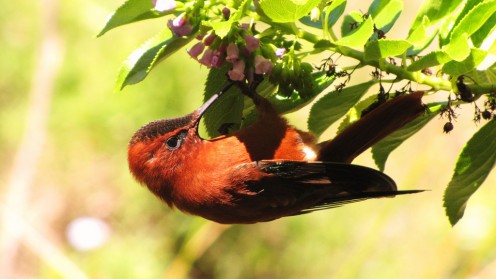
Hummingbird Facts & Some Beautiful Footage - Richard Chisum Published on Dec 12, 2013 Narrated by Donna Wittrig, of www.notyournectar.com
California Condor (Gymnogyps californianus)
North America's largest bird the California Condor once dominated the Western skies, however; in the 20th century, their population declined. Listed as CE at the IUCN red list but drastic measures are needed to prevent the California Condor from becoming extinct. Measures are being taken to save this beautiful bird from extinction.
Update as of April 2017 then updated again on July 14, 2017(Arizona/Utah Breeding Status)
- Horsehoe Bend area (Glen Canyon National Recreation) - 441/ 653 (possible) - showing pair behavior
- Grand Canyon National Park - 187/ 280 - Showing signs of egg incubating behavior
- Dana Butte area - 123/ 297 - possible egg incubating behavior
- Marble Canyon area - 354/ 496 - confirmed sitting on eggs - can be seen from the Navajo Bridge
- Tapeats area - 203/ 447 - are paired up showing signs of nesting
- Thunder River area - 520/ ?? - pair behavior activity
- Havasupai Indian Reservation - 275-379/453 - could be possible egg incubating behavior
- Kaibab National Forest (Kane Canyon) - 293/ 389 - possible egg incubating behavior - (Buckskin Wash of House Rock Valley) - 193/ 241 - possible egg incubating behavior
- Vermilion Cliffs National Monument (BLM) - ( Vermilion Cliffs) - 266/296 - sitting on egg - (near Sand Crack) - 162-388/383 - possible egg incubating behavior - (near Badger) - 342/541 - possible egg incubating behavior
- Zion National Park - 523/ 409 - paired up showing nesting behavior
California Condor
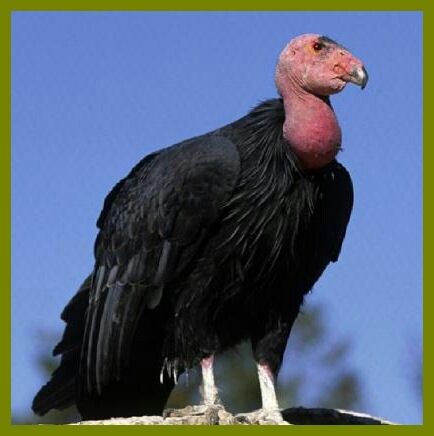
California Condor Facts
- 2005 California State Quarter features the Condor.
- In response to an emotional state, the condor's head the skin and neck can actually change colors which allow for them to communicate.
- They have a poor sense of smell and excellence eyesight.
- The California Condor has a wingspan of nine and a half feet.
- Black with patches of white under their wings, bald head (usually get inside a large carcass when feeding, helps keep their head clean), head color varies from white to a reddish purple and very few feathers.
- Are capable of traveling 150 miles a day and can soar as high as 15,0000 feet.
- They prefer large dead carcasses such as sheep, deer, cattle, but will eat rodents and rabbits. Known as the cleaning crew since they feast on dead rotting meat which is vital to the natural ecosystem.
- The California Condors live in canyons, gorges, and mountains in the rocky forest regions. They have been known to nest in tree cavities but most often it is in crevices in the rock faces and caves.
- The mating season is from winter to spring and once the females lay an egg it takes 56 days to hatch. Females only lay one egg. The baby chick learns to fly at six months and will stay with the parents many more months.
Pinnacles National Park is one of five California Condor Recovery Plan release sites
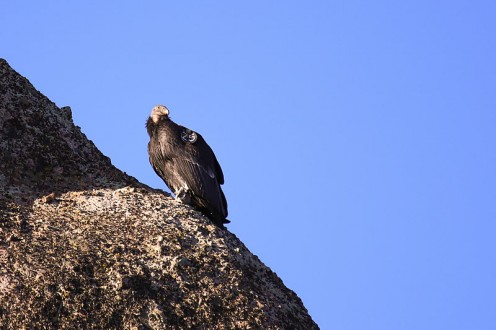
Pictures of Beautiful Exotic Birds
